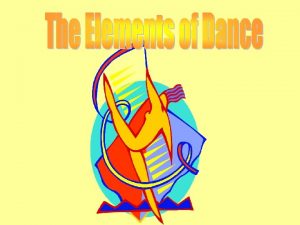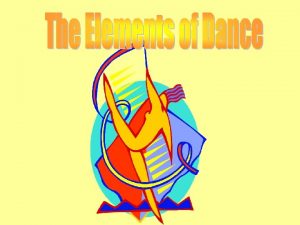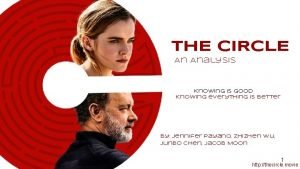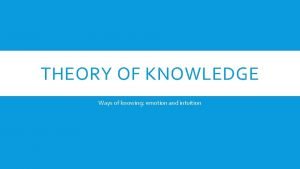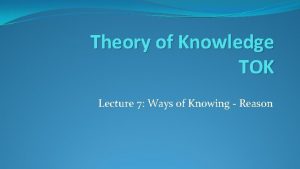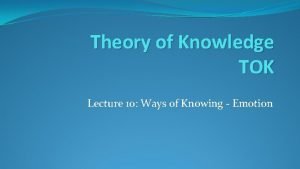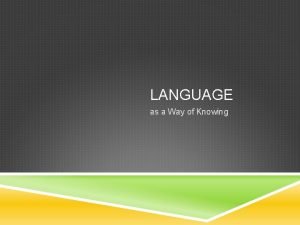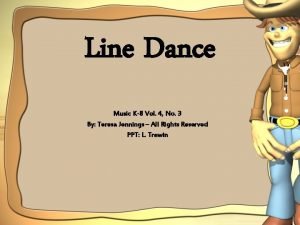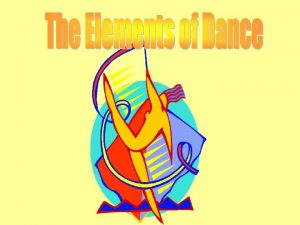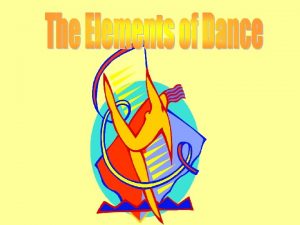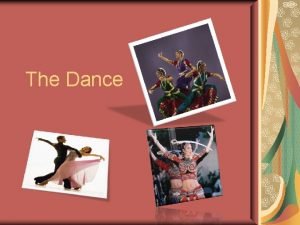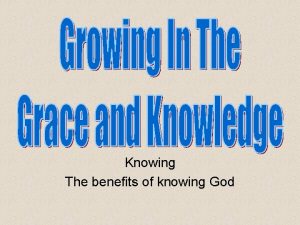Dance is a way of knowing and communicating











- Slides: 11


Dance is a way of knowing and communicating. All societies use dance to communicate on both personal and cultural levels and to meet physical and spiritual needs. Dance, as with all the arts, has its own language. We need to learn this language in order to fully understand appreciate the world of Dance.

The Language of Dance Elements: Time, Space and Force Choreographic Forms: Theme and Variations, Rondo and Narrative Styles: (characteristics of) Ballet, Tap, Jazz and Modern

Elements TIME: The relationship of one movement or part of a movement to another. Includes pulse, speed (or tempo), duration, rhythm, and phrases. Pulse: the ongoing underlying beat Tempo: The speed with which a movement is performed Duration: the length of time a movement lasts: a long time, short time or something in between Rhythm: a flow of sound or movement having regular accented beats; a movement or activity in which some action repeats regularly; patterns made by arranging long and short sounds or strong and light sounds Syncopation: a temporary accenting of a normally weak beat in music to vary the rhythm Phrasing: a grouping and articulation of a group of notes Accent: a movement or shape performed in such a way as to give emphasis.

Elements • SPACE: the area of space occupied by the dancer’s body; includes direction, size, pathways, levels and shapes. • Direction: which way a dancer faces or moves; e. g. , forward, backward, sideways, up and down • Size: magnitude of a body shape or movement; from small to large movements • Pathways: patterns made as a dancer moves through the air or on the floor (straight, vertical, horizontal, zig-zag); can be made with locomotor or non-locomotor movements, separately or in combination. • Levels: the vertical distance from the floor. Movements take place on three levels: high, middle or low and deep. • Shapes: the form created by the body’s position in space. Aspects of shape are open/closed, symmetrical/asymmetrical, angular and curved.

Elements • FORCE: (energy) degree of muscular tension and use of energy while moving. • Dynamics: how a movement is done • Flow: continuity of movement (bound/free flowing) • Weight: strength (force) lightness of movement (heavy/light)

Choreographic Forms Choreography is the art of arranging dances Theme: the basic idea of the play, which the author dramatizes through the conflict of characters. Rondo: a dance structure with three or more themes where one theme is repeated. ABACAD Narrative: choreographic structure that follows a specific story line to convey specific information through a dance Variations: contrasts in the use of the dance elements, repetitions.

Styles (characteristics) Ballet: a classic form of dance growing out of the French nobility. Its root is court dances. It is known for its: • standardized dance movements • specialized leaps and lifts • French terminology to describe each standardized movement • Pointe shoes for women • slippers for men • costumes---tights, tutus

Styles (characteristics) Tap: is a percussive dance form in which dancers produce sound by wearing shoes to which metal taps have been added. Tap dance, an American dance form which concentrates on footwork and rhythm, has roots in African, Irish and English clogging traditions. Its roots lie in recreational dance (Irish Step dance, jig and African steps). It is known for: • An emphasis on rhythm • Tap shoes • Costumes—formal to street wear • Improvisation

Styles (characteristics) Jazz: American music marked by lively rhythms with unusual accents and often including melodies made up by musicians as they play. It’s roots are in social dances and early musical theatre dance. It’s known for: • Stylized movement • Accents in hands, head, hips and feet • English/French terminology to describe movements • Jazz shoes or boots • Costume related to theme of dance • Improvisation

Styles (characteristics) Modern: a form of dance developed by dancers interested in breaking from ballet traditions and expressing a more liberating form of movement. It expresses complex emotions and abstract ideas. It is known for: • Freedom of movement • Usually barefoot but can use shoes based on theme • Costume related to dance theme • Improvisation used in the development of choreography
 The area of space occupied by the dancer's body
The area of space occupied by the dancer's body Bound and free movements
Bound and free movements Types of hydrocele
Types of hydrocele We're gonna dance to one song
We're gonna dance to one song Soul search the circle
Soul search the circle Not knowing is worse than knowing
Not knowing is worse than knowing Emotion as a way of knowing
Emotion as a way of knowing Deductive reasoning tok
Deductive reasoning tok Tok ways of knowing
Tok ways of knowing Language as a way of knowing
Language as a way of knowing Electric slide steps
Electric slide steps Everybody dance and sing line dance
Everybody dance and sing line dance
